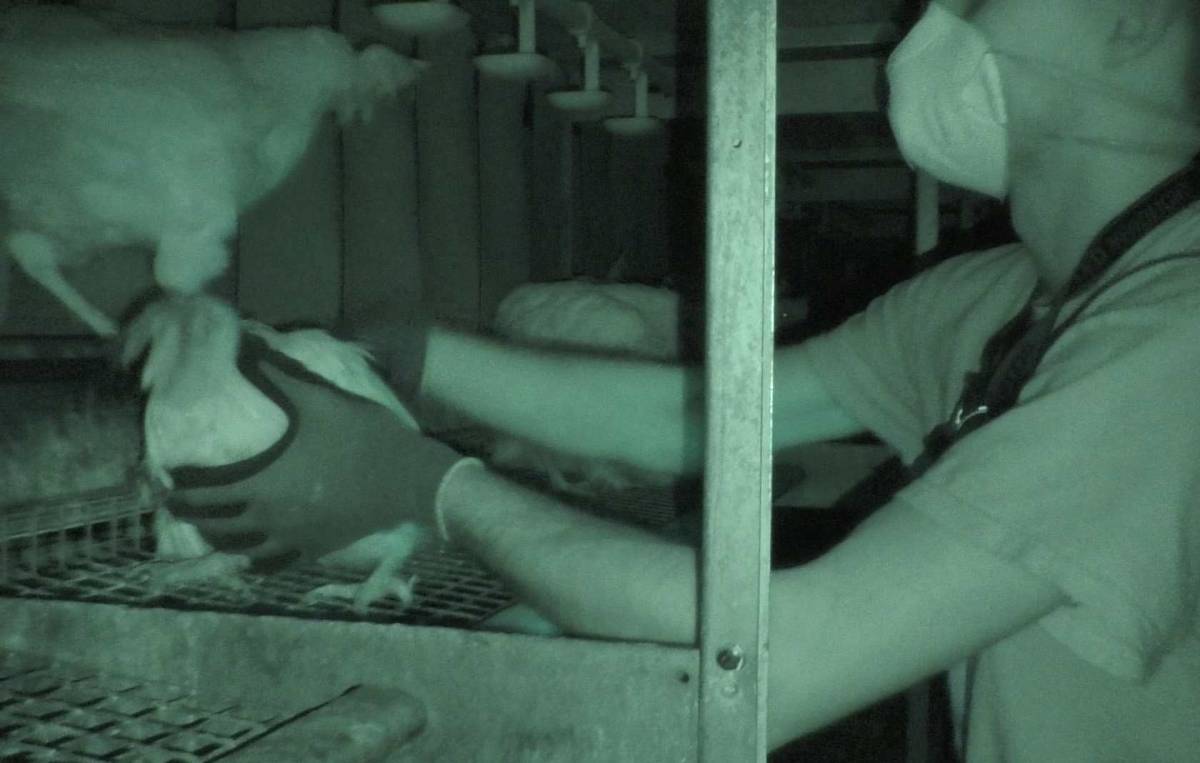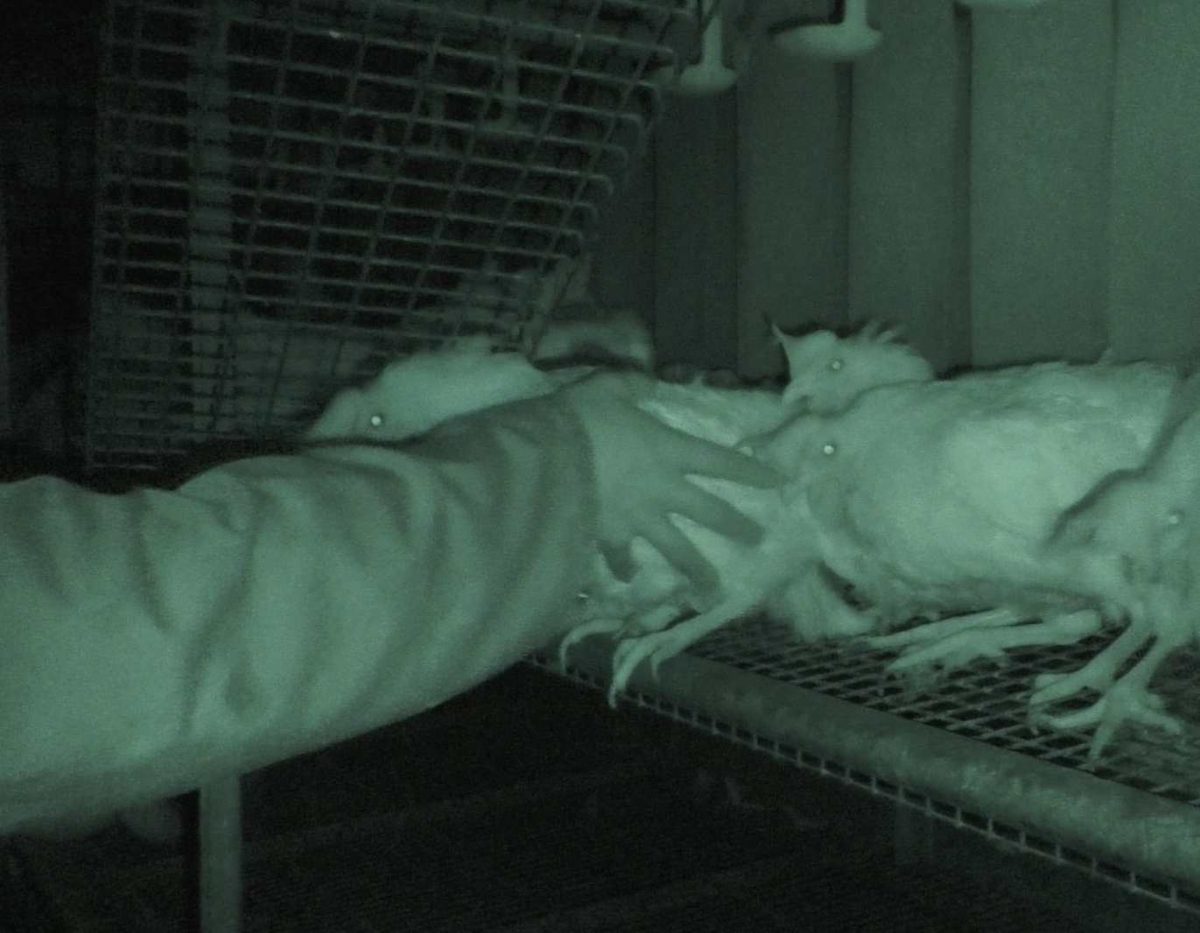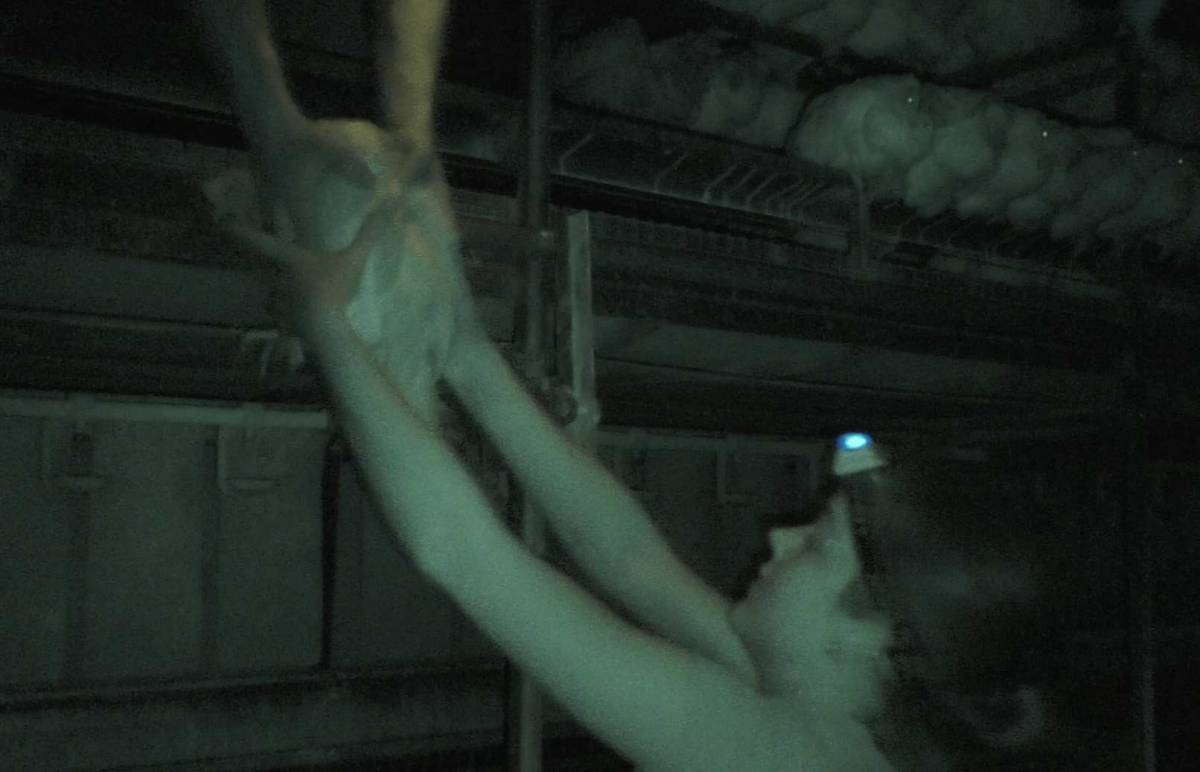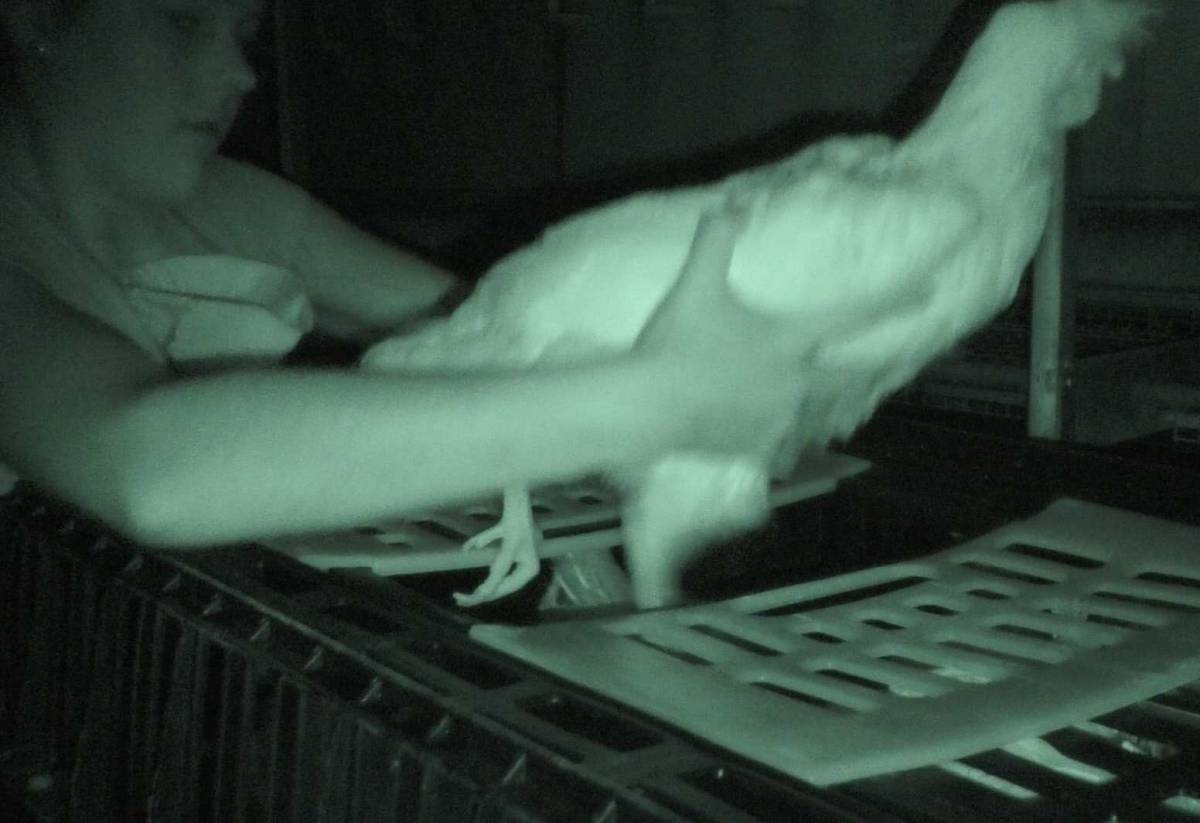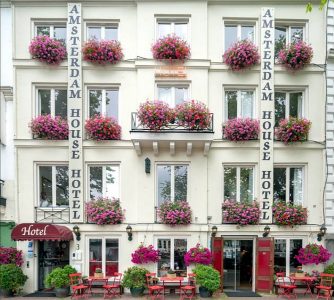Last Tuesday evening an Eyes on Animals team supervised and gave instructions during the upright catching of 23.000 laying hens at one of Kipsters’ laying-hen farms, in Beuningen. Instead of being grabbed and held upside down by one leg, which causes a lot of stress and pain, the hens were caught using the method developed by Eyes on Animals, upright and around the breast. In 2019 Kipster switched to our upright method for animal welfare reasons.
Because the upright catching method takes almost 2-times longer, Kipster hired a larger catching team to remain efficient. A team of 35 poultry catchers were employed through the Jekal and Van den Broek companies. In total it took the team approximately 4 hours to load all 23,000 hens humanely.
The catching crew had received a training earlier from Eyes on Animals. But because new catchers join the team on a regular basis, Kipster also sent a multilingual instruction booklet – and video made by Eyes on Animals to the team in advance, and the instructions were handed out an arrival as well.
We are very satisfied about how things went . During the catching, it was exceptionally quiet in the stall (55-60dB). The chicken-catchers worked well with the catching technique and the stress among the hens was minimal. A world of difference compared to the commercial catching method, when the hens often scream very loud. Blue light head lamps were used consistently so waking up the hens was avoided as much as possible.
Towards the end of the catching evening, stress among the hens increased slightly, as the last few hens in the barn are the most difficult to capture because they have more room, are awake and are in hard-to -reach places. We will be brainstorming how we can further reduce the stress for the last few hens.
Want to know more about the upright capture method by Eyes on Animals?
Watch our instruction video here >>
Read our 1 page instruction flyer here >>
Check out our flyer with more information here (costs, duration, trained catching teams) >>
